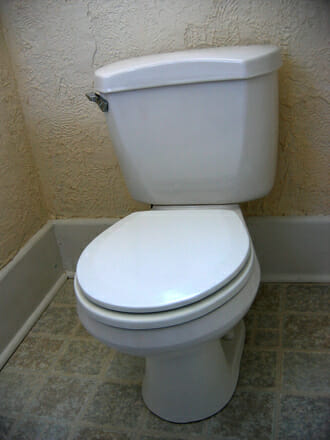When to Replace Your Toilet Fill Valve
The fill valve on a standard toilet is not particularly complicated. It is simply a tube fitted with a shut-off valve that’s connected at the bottom of the tank to the water supply. There is an air filled cup or ball which is connected to the fill valve. This floats in the water inside the tank and triggers the valve shutting off once the water level reaches a certain height. Unfortunately, fill valves can wear out, so you need to be aware of when your toilet fill valve is in need of replacement.
Symptoms of a Faulty Fill Valve:
There are several signs that indicate that your fill valve is in need of replacement. The most common is a running toilet. This is often caused when the flapper is leaking, allowing the tank to drain slowly and the fill valve to constantly run, but it can also occur if the fill valve has become worn out. In order to determine if the underlying problem is the flapper or valve, all you need to do is put dye into the water inside the toilet tank. Wait a few hours without flushing the toilet and check to see if the water in the bowl has changed color. If the water has not changed, the fault lies with the fill valve.
Another common symptom of a worn-out fill valve is noise. As the metal components of older ballcock style valves become worn, the valve tends not to open and close smoothly. This means that the force of the water being channeled through the aperture can produce some odd sounds. You may not notice the low humming sound, which is the initial noise and is almost inaudible. Unfortunately, this is only the first indication that water isn’t flowing freely. This sound is likely to develop into a screaming, screeching noise. This noise is usually because the metal components have become loose and the valve is likely to be failing.
Troubleshooting the Issue:
In some cases, the fill valve may not be faulty as the problem may actually be a misadjusted float. If the float is not correctly adjusted, it could mean that your fill valve is not shutting off completely. Troubleshooting this issue is relatively simple. All you need to do is before you try to unscrew the ball to adjust the rod length on the float arm, hold the float up as high as possible. If the water continues to flow or you hear any screeching or grinding noises, then the valve is in need of replacement. If the water does shut off, then you need to adjust the float, and the problem should be corrected.
Changing the Fill Valve:
Replacing a fill valve is relatively easy. You will need to shut off the water, empty the tank and disconnect the water supply before you can begin. To remove the old valve, you will need to loosen the retaining nut located under the tank and lift out the valve. The new valve should be installed by reversing this process. You will need to follow the valve package directions to adjust the valve height. Universal fill valves are available at any hardware store.
By Giovanni Longo President Flood Brothers Plumbing
Giovanni Longo is a 3rd generation master plumber who has been practicing his craft and trade in the greater Los Angeles area for well over a decade and a half. A plumbing and hydraulics-engineering innovator, Giovanni’s particular world-class expertise focuses on dealing with challenging sewer system designs as well as resolving complex commercial and residential draining issues. As a certified Flood Mitigation expert, he is also well versed in a wide variety of water damage and remediation solutions.





